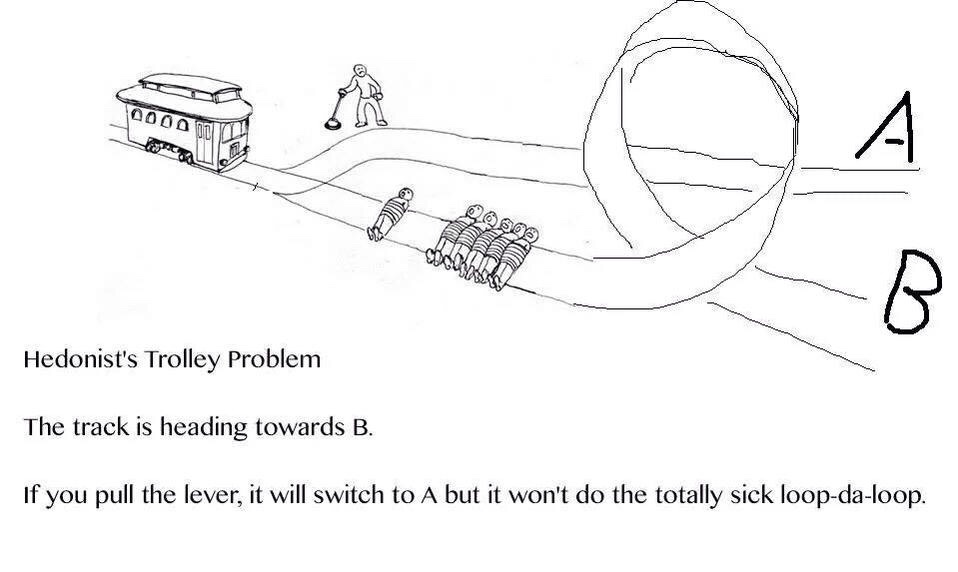Basic argument structure goes like this:
- Premise 1
- Premise 2
———————–
- Conclusion
Knowing how to argue is great, except when someone you disagree with is proving things you don’t like. In that case you have to know how to break your opponent’s argument or provide an argument that they cannot break.
First thing that most people do to break an argument is to attack premises (assuming no fallacies are present). To avoid accepting your opponent’s conclusion in line 3, if you can cast doubt on the truth of premise 1, then your opponent will never get to line 3.
Personally I think this sucks. I hate arguing about the truth of premises because many times people have no idea what the truth is and hold unbelievably stupid positions.
G. E. Moore argued that if the conclusion is more certain than the premises, then you can flip the argument:
- Conclusion
- Premise 2
———————–
- Premise 1
Instead of arguing about the truth of the premises, this strategy pits the premises against the conclusion by arguing that while the premises imply the conclusion, the conclusion also implies the premises. Hence there is a question about which should be used to prove the other, and, as long as this question remains, nothing is proved.
This leads to a kind of argument holism. An argument must first be judged on the relative certainties of its premises and conclusion before the premises can even be considered to be used to derive the conclusion.
Personally I think this is great. It is possible to just ignore whole arguments on the grounds that the person arguing hasn’t taken into account the relative certainties involved. If you haven’t ensured that your premises are more certain than your conclusion, then you can’t expect anyone to accept your conclusion based upon those premises.
However this leads to a nasty problem. If all arguments are subject to this sort of holism, then arguments can be reduced to their conclusions: if the whole argument is of equal certainty, i.e. the conclusion is just as certain as a premise, then there is no reason to bother with the premises. If we just deal with conclusions, and everyone is certain of their own conclusions, then arguing is useless.
(In practice, of course, only mostly useless. You can (try to) undermine someone’s argument by finding something more certain and incompatible with the conclusion in question (premises are always a good place to start looking). For better or worse, though, even when people’s premises have been destroyed, all too often they still are certain of their conclusions.)
Moreover, if everyone is certain of their conclusions, then no conclusion is any more certain than another. If everything has equal certainty, then nothing is certain.
How to get around this problem of equal certainty?
First let me mention that this is a strictly philosophical problem: in daily life we have greater certainty in some things than we do in others. For instance I trust certain people, and hence if they say something is true then I will be more certain of it’s truth than if someone else were to say the same thing. So fair warning: what comes next is a philosophical solution to a philosophical problem.
If something and its opposite are equally certain, then, generally, there is nothing more that we can know about it. For example if we know that it is either raining or not raining, then we really don’t know much about the weather. This applies in all cases, except for paradoxes. In a paradox something and its opposite imply each other. Hence, in a paradox, there is only one thing, not a thing and it’s negation.
Most the time paradoxes only shows us things that cannot exist. However, if what caused the paradox was the negation of something, then we can have certainty in that thing: it’s negation cannot exist on pain of paradox.
Therefore, to provided a rock solid foundation for an argument, a paradox must be appealed to such that the paradox must have been generated from the negation of the thing to be used as a premise.
As far as I can tell, this is the only argument structure that yields absolutely certain results. All other arguments styles are subject to questions about the truth of premises and the legitimacy of using those premises (even if true) for proving a particular conclusion.


